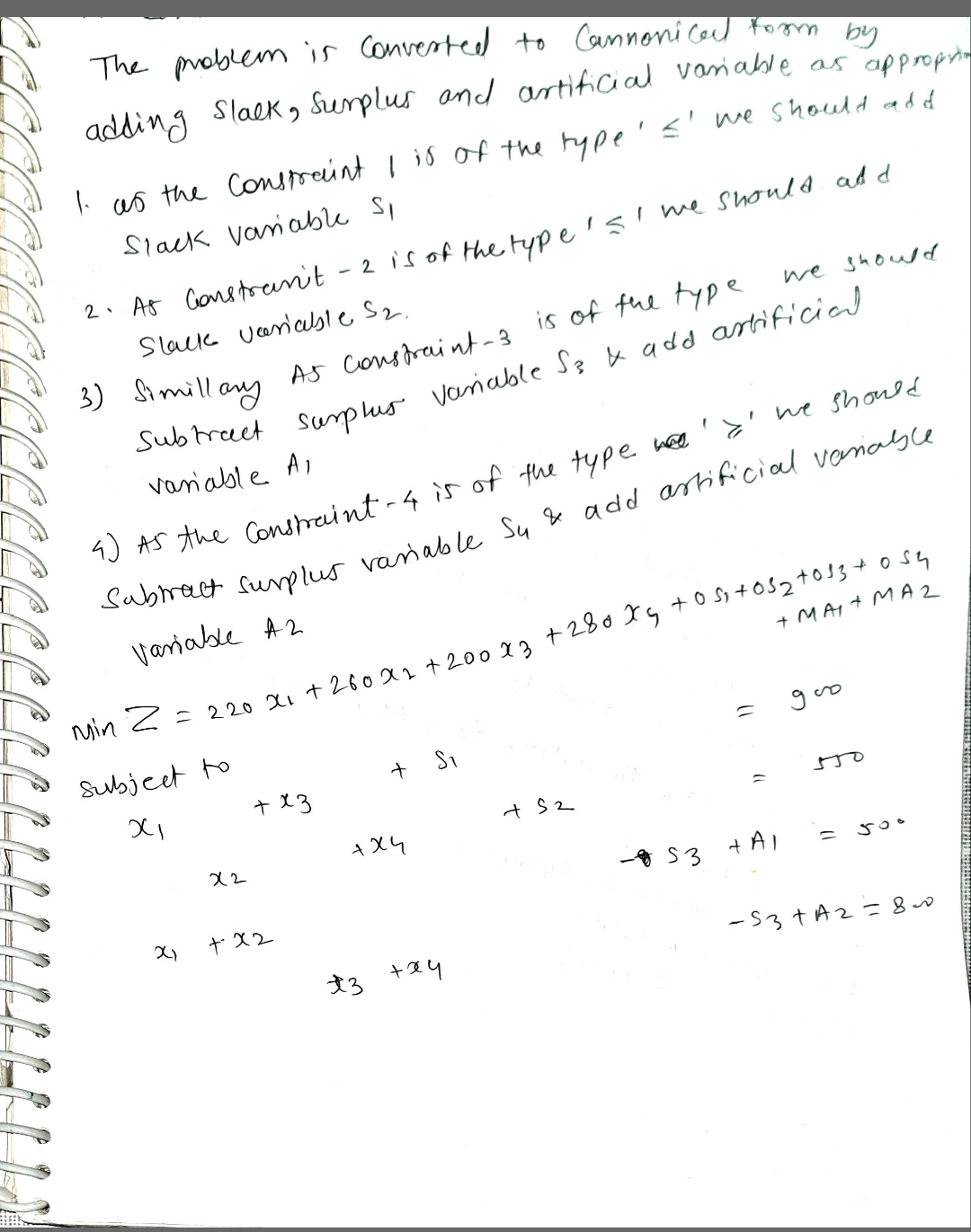his case study is also about linear programming. (Sections 3.4 and 3.5) city has two high schools. The first school has a maximum enrollment of 900 students and the second school has a maximum enrollment of 550 students. The city is divided into two regions: Inner City and Suburbs. here are at least 500 students in the Inner City region and at least 800 students in the Suburbs region. The annual transportation cost varies by region as shown in the table. ransportation Costs School 1 (Cost per student) School 2 (Cost per student) nner City 220 260 Suburbs 200 280 ased on these constraints, what is the minimum possible annual transportation cost? Under what conditions does it occur? Start by defining the appropriate variables. olve using Solver in Google Sheets. Interpret and explain the results.
his case study is also about linear programming. (Sections 3.4 and 3.5) city has two high schools. The first school has a maximum enrollment of 900 students and the second school has a maximum enrollment of 550 students. The city is divided into two regions: Inner City and Suburbs. here are at least 500 students in the Inner City region and at least 800 students in the Suburbs region. The annual transportation cost varies by region as shown in the table. ransportation Costs School 1 (Cost per student) School 2 (Cost per student) nner City 220 260 Suburbs 200 280 ased on these constraints, what is the minimum possible annual transportation cost? Under what conditions does it occur? Start by defining the appropriate variables. olve using Solver in Google Sheets. Interpret and explain the results.
Advanced Engineering Mathematics
10th Edition
ISBN:9780470458365
Author:Erwin Kreyszig
Publisher:Erwin Kreyszig
Chapter2: Second-order Linear Odes
Section: Chapter Questions
Problem 1RQ
Related questions
Question

Transcribed Image Text:This case study is also about linear programming. (Sections 3.4 and 3.5)
A city has two high schools. The first school has a maximum enrollment of 900 students and the second school has a maximum enrollment of 550 students. The city is divided into two regions: Inner City and Suburbs.
There are at least 500 students in the Inner City region and at least 800 students in the Suburbs region. The annual transportation cost varies by region as shown in the table.
Transportation Costs
School 1 (Cost per student)
School 2 (Cost per student)
Inner City
220
260
Suburbs
200
280
Based on these constraints, what is the minimum possible annual transportation cost? Under what conditions does it occur? Start by defining the appropriate variables.
Solve using Solver in Google Sheets. Interpret and explain the results.
Expert Solution
Step 1


Step by step
Solved in 5 steps with 6 images

Recommended textbooks for you

Advanced Engineering Mathematics
Advanced Math
ISBN:
9780470458365
Author:
Erwin Kreyszig
Publisher:
Wiley, John & Sons, Incorporated

Numerical Methods for Engineers
Advanced Math
ISBN:
9780073397924
Author:
Steven C. Chapra Dr., Raymond P. Canale
Publisher:
McGraw-Hill Education

Introductory Mathematics for Engineering Applicat…
Advanced Math
ISBN:
9781118141809
Author:
Nathan Klingbeil
Publisher:
WILEY

Advanced Engineering Mathematics
Advanced Math
ISBN:
9780470458365
Author:
Erwin Kreyszig
Publisher:
Wiley, John & Sons, Incorporated

Numerical Methods for Engineers
Advanced Math
ISBN:
9780073397924
Author:
Steven C. Chapra Dr., Raymond P. Canale
Publisher:
McGraw-Hill Education

Introductory Mathematics for Engineering Applicat…
Advanced Math
ISBN:
9781118141809
Author:
Nathan Klingbeil
Publisher:
WILEY

Mathematics For Machine Technology
Advanced Math
ISBN:
9781337798310
Author:
Peterson, John.
Publisher:
Cengage Learning,

